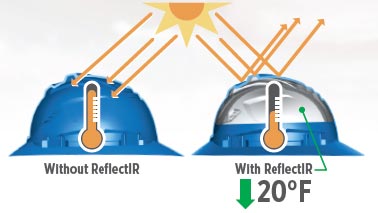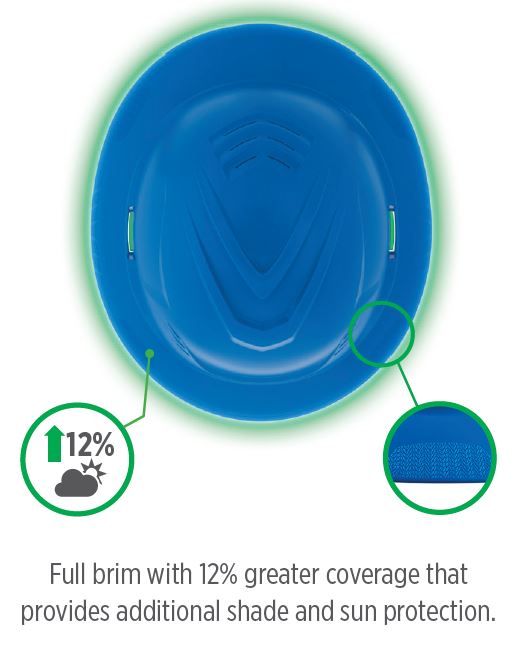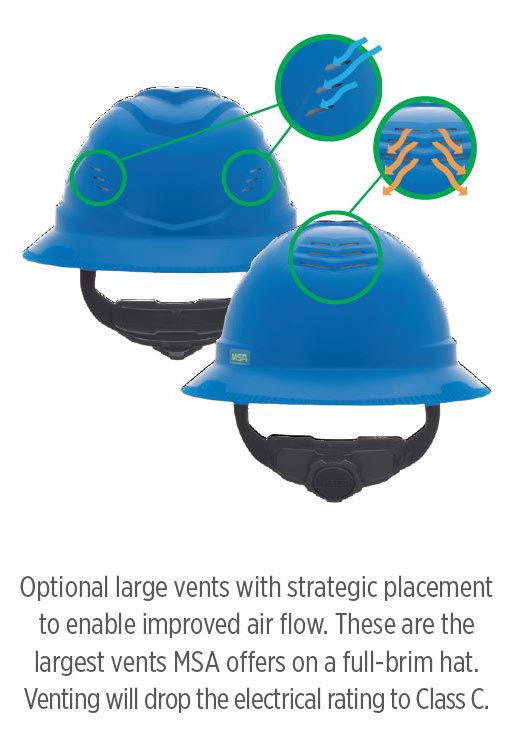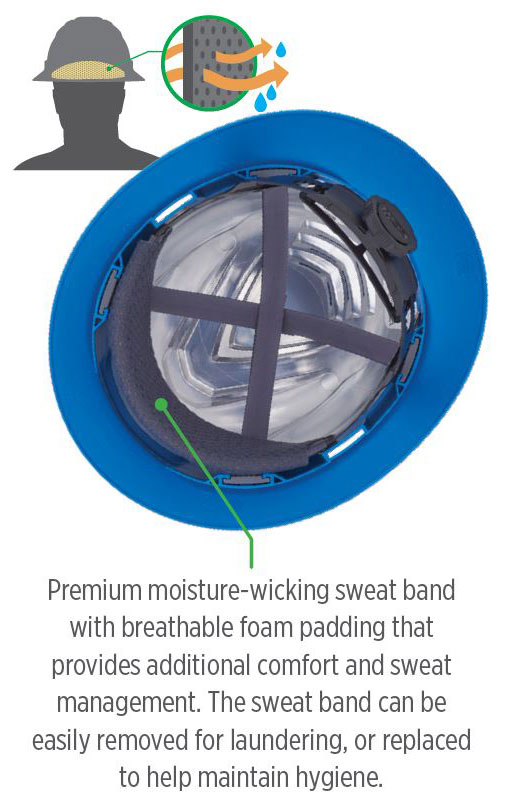Help Workers Beat the Heat Ahead of Upcoming New Regulations
As a business owner or crew supervisor, you’ve always been aware of the heat-related dangers of working out in the elements—particularly when working in overhead sun. As the temperature increases, so does the risk of irritation, illness, and even death.
The Federal government is also very aware of the importance of worker protection in hot environments. The Occupational Safety and Health Administration (OSHA) and other regulatory bodies are working to find ways to ensure your crew is kept safe in these situations. These efforts have been increasing over the past few months.
The New Worker Protection Initiative
An announcement on September 20, 2021, confirmed a ramped-up initiative by OSHA and other regulatory bodies to look into worker conditions in hot environments. With their findings, they are tasked with creating additional legislation and standards to address worker safety in these scenarios.
A statement on the Whitehouse.gov website, titled FACT SHEET: Biden Administration Mobilizes to Protect Workers and Communities from Extreme Heat, announced the initiative1.
“New Initiatives at OSHA and Across Agencies Will Enhance Workplace Safety, Build Local Resilience, and Address Disproportionate Heat Impacts”
The reasoning behind this new interagency taskforce regulatory initiative is further explained:
“The United States experienced a dangerously hot summer this year, breaking records last set during the Dust Bowl. The climate crisis is making heat waves more intense and frequent—endangering workers and communities. During the June 2021 heat wave in the Pacific Northwest, states reported hundreds of excess deaths and thousands of emergency room visits for heat-related illness…
… Recognizing the seriousness of this threat, the Biden Administration is taking immediate action on heat hazards to protect workers and communities as part of a broader commitment to workplace safety, climate resilience, and environmental justice. The Departments of Labor, Health and Human Services, Homeland Security, and Agriculture; the Environmental Protection Agency; and the National Oceanic and Atmospheric Administration are announcing a set of actions that will reduce heat-related illness, protect public health, and support the economy.”
What is important to you as a business owner or safety professional are the plans directly related to the development of OSHA’s new workplace heat standards and how enforcement will be handled.
Some of the projects that OSHA is planning for workplace safety standards are:

Heat Stroke
Heat stroke is the most severe of the four and can have life-threatening consequences. Extreme heat can cause the body’s regulating system to malfunction, too. The body temperature raises to critical levels of over 104°F (40°C).
The worker exhibits the signs of heat stroke, including confusion, loss of consciousness, and possibly seizures. Sweating, the body’s main temperature regulation system, ceases. Make no mistake… this is a life threatening situation. Call 911 immediately and get medical help.
Heat Exhaustion
Heat exhaustion exhibits different signs, but is also serious. Unlike heat stroke, the worker will be sweating heavily, with a body temp of over 100.4°F (38°C). Other signs are weakness, irritability, confusion, and heavy thirst, along with nausea, dizziness, and a headache. Move the worker to a cool location and take the worker to an emergency room or onsite medical clinic as soon as possible.
Heat Cramps
Heat cramps are caused by the loss of body salts and fluids, usually the result of heavy sweating. Drinking water or carbohydrate-electrolyte replacement drinks (sports drinks) every 15 to 20 minutes may help alleviate the symptoms. While not immediately life-threatening, a cramp at the wrong time can be disastrous. Think… climbing a ladder. Definitely not a good time to cramp up.
Heat Rashes
Heat rashes could turn infectious if not treated. They show up as a small red cluster of pimples or blisters. Any place there’s skin-on-skin contact or loose or tight damp clothing is present, rashes develop. Moving the worker to a cooler, less humid location helps.
OSHA Recommended Ways to Help Workers Avoid Heat-Related Illness
Many employers already have taken steps to protect workers who work in the sun or other hot environments outdoors. One of the key steps now is to make sure it’s documented properly. OSHA is getting ready to make this a regulation or mandate.
Educating your workers and supervisors needs to be an important part of the plan. Make sure they know the danger signs of heat-related illnesses. They all need to know the symptoms and be encouraged to watch out for their coworkers. Some of these illnesses disorient the victim. They may not realize it when they’re getting sick. A coworker may see the symptoms before the victim realizes they’ve been compromised.
Some questions and factors to consider are:
- How you’re going to handle new hires and temp workers who are not yet acclimatized to the heat.
- Do you have the medical capability to handle or respond to these illnesses?
- Do you have the proper protocols in place to get outside medical assistance if needed?
- Have you considered engineering controls and best work practices that could mitigate risk?
- Are you monitoring National Weather Service bulletins and what are your steps in the event of a heat advisory or warning?
- And last but not least, if the heat index determines that work should be paused or cancelled, do you have documentation in place to show your responsibilities?
- One more thing to consider is the human element. If uncomfortable, workers may neglect to use some PPE designed to keep them safe in the heat. While some bulky coats and other seasonal gear can be ditched for cooler alternatives, many PPE items cannot. They’re still necessary for worker protection.
PPE Solutions: A Hard Hat that Helps Workers Beat the Heat
Hard hats must always be worn when struck-by hazard or dropped-on are present, no matter how hot they feel to the worker. Ball caps, which some workers prefer in the heat, don’t offer any protection against these hazards.
However, new products are available that can keep the worker’s head cooler while still keeping them protected.

* Compared to a hard hat without the ReflectIR Thermal Barrier in sunny conditions; testing done with black, non-vented, V-Gard C1 Hard Hats
The new V-Gard C1™ Hard Hat features a patent-pending ReflectIR™ Thermal Barrier that keeps the inside of the hard hat up to 20°F (11°C) cooler.* This Type 1 hard hat is intended for outdoor jobs, such as construction, utilities, and oil and gas, where heat stress due to sun exposure is a concern.
The principle behind the ReflectIR Technology is similar to a car windshield sunshade or the radiant barrier used in home attics.
As the sun’s heat hits the hard hat surface, the ReflectIR Barrier reflects the heat back into the atmosphere instead of letting it penetrate the shell.
The barrier is made of aluminum but has been applied inside the hard hat far enough from the brim so it does not impact the electrical rating. A non-vented V-Gard C1 will have an ANSI class E electrical rating.
Additional features of the V-Gard C1 Hard Hat that help to reduce heat stress include:



The V-Gard C1 Hard Hat with ReflectIR Thermal Barrier technology can be used year-round. That means you won’t need to use a different hard hat in the winter. The new V-Gard C1 will quickly become your go-to gear, 12 months a year.
The V-Gard C1 Hard Hat only helps protect the user specifically from heat stress caused by direct overhead sunlight. If other sources of heat are present, such as radiant heat from hot surfaces or materials, then additional measures for heat stress mitigation will be necessary. Please use the OSHA recommended procedures and equipment for those scenarios.
Learn more:
MSAsafety.com/VGardC1
Sources:
1 Official Initiative announcement: https://www.whitehouse.gov/briefing-room/statements-releases/2021/09/20/fact-sheet-biden-administration-mobilizes-to-protect-workers-and-communities-from-extreme-heat/
2 Official OSHA Press release announcing their involvement: https://www.osha.gov/news/newsreleases/national/10262021
3 CDC Website Guide: https://www.cdc.gov/disasters/extremeheat/warning.html - text
4 https://www.osha.gov/heat-exposure/planning
Note: This Bulletin contains only a general description of the products shown. While product uses and performance capabilities are generally described, the products shall not, under any circumstances, be used by untrained or unqualified individuals. The products shall not be used until the product instructions/user manual, which contains detailed information concerning the proper use and care of the products, including any warnings or cautions, have been thoroughly read and understood. Specifications are subject to change without prior notice. MSA is a registered trademark of MSA Technology, LLC in the US, Europe, and other Countries. For all other trademarks visit https://us.msasafety.com/Trademarks.




